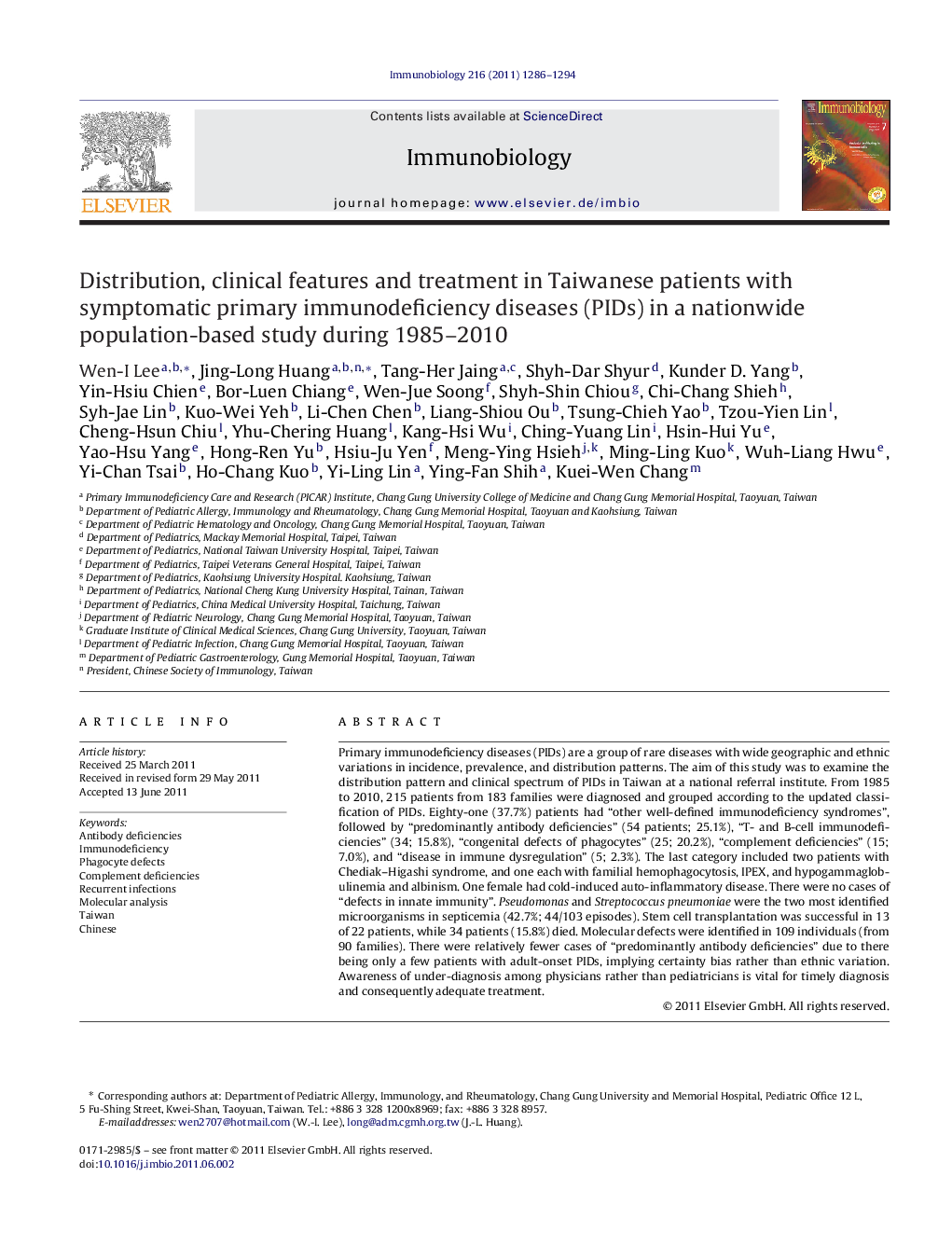| کد مقاله | کد نشریه | سال انتشار | مقاله انگلیسی | نسخه تمام متن |
|---|---|---|---|---|
| 2183508 | 1095572 | 2011 | 9 صفحه PDF | دانلود رایگان |

Primary immunodeficiency diseases (PIDs) are a group of rare diseases with wide geographic and ethnic variations in incidence, prevalence, and distribution patterns. The aim of this study was to examine the distribution pattern and clinical spectrum of PIDs in Taiwan at a national referral institute. From 1985 to 2010, 215 patients from 183 families were diagnosed and grouped according to the updated classification of PIDs. Eighty-one (37.7%) patients had “other well-defined immunodeficiency syndromes”, followed by “predominantly antibody deficiencies” (54 patients; 25.1%), “T- and B-cell immunodeficiencies” (34; 15.8%), “congenital defects of phagocytes” (25; 20.2%), “complement deficiencies” (15; 7.0%), and “disease in immune dysregulation” (5; 2.3%). The last category included two patients with Chediak–Higashi syndrome, and one each with familial hemophagocytosis, IPEX, and hypogammaglobulinemia and albinism. One female had cold-induced auto-inflammatory disease. There were no cases of “defects in innate immunity”. Pseudomonas and Streptococcus pneumoniae were the two most identified microorganisms in septicemia (42.7%; 44/103 episodes). Stem cell transplantation was successful in 13 of 22 patients, while 34 patients (15.8%) died. Molecular defects were identified in 109 individuals (from 90 families). There were relatively fewer cases of “predominantly antibody deficiencies” due to there being only a few patients with adult-onset PIDs, implying certainty bias rather than ethnic variation. Awareness of under-diagnosis among physicians rather than pediatricians is vital for timely diagnosis and consequently adequate treatment.
Journal: Immunobiology - Volume 216, Issue 12, December 2011, Pages 1286–1294